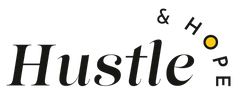Let’s be real—note-taking is an art. Whether you’re jotting down your next big idea, making a to-do list, or capturing those genius lightbulb moments, having the right system in place can make all the difference. And guess what? You don’t have to choose between sticky notes and notebooks—you just need to know when (and how) to use them like a pro.
Sticky Notes vs. Notebooks: What’s Best for You?
Not all notes are created equal! Sometimes, a quick sticky note is all you need, while other times, a more detailed approach is required. Here’s a simple breakdown:
- Sticky Notes: Best for short-term reminders, quick lists, and brainstorming ideas that you may need to move around (think: tasks for the week, key points from a meeting, or a quote you don’t want to forget). These are great when you need flexibility and quick access to important tidbits of information.
- Notebooks: Ideal for in-depth notes, project planning, journaling, and anything that needs more context. If you find yourself writing on multiple sticky notes for the same topic—switch to a notebook! They provide structure, organization, and permanence for your ideas.
Tried-and-True Note-Taking Methods
Let’s get into the good stuff—here are five proven methods to up your note-taking game:
1. The Cornell Method (For Structured Thinkers)
If you like an organized approach, this is for you. Divide your page into three sections: a narrow left column for keywords or questions, a larger right column for detailed notes, and a summary section at the bottom. This method is gold for lectures, meetings, and research notes. It encourages active engagement and helps you process information effectively.
Pro Tip: When reviewing your notes, use the left-hand column to quiz yourself on key points. This boosts retention and helps you absorb information better.
2. The Mind Map Method (For Visual Learners)
Got a complex idea? Map it out! Start with a central topic in the middle of your page and branch out with related ideas, using lines and bubbles to connect thoughts. This works wonders for brainstorming sessions and creative projects. By visually linking ideas, you’re able to see connections and relationships between concepts more clearly.
Ideal For: Planning projects, writing outlines, developing creative concepts, and simplifying intricate topics.
3. The Sticky Note Strategy (For Dynamic Thinkers)
When you need flexibility, sticky notes are your best friend. Write individual ideas on separate sticky notes and organize them on a whiteboard, wall, or desk. Need to shift priorities? Just move the notes around! This method is a game-changer for brainstorming and project planning.
This is especially useful for:
- Project managers organizing workflow steps
- Writers structuring content and story ideas
- Students outlining key concepts before exams
4. The Bullet Journal Method (For Task-Oriented People)
Combine notes, tasks, and planning into one sleek system! Use bullet points, symbols, and short-form notes to track projects, ideas, and daily to-dos all in one place. Bonus: it makes flipping back through your notes super easy. This method is perfect if you want a hybrid between a planner and a journal that keeps everything in one spot.
Pro Tip: Customize your bullet journal with different color codes for work, personal tasks, and important deadlines to stay even more organized.
5. The Paragraph Method (For Writers & Deep Thinkers)
This one's for our notebook fans out there. Sometimes, you just need to let your thoughts flow. Writing in full sentences without worrying about structure is great for journaling, meeting recaps, and big-picture planning. Later, you can highlight key points or organize thoughts into action steps.
Pro Tip: If you’re reviewing your paragraph-style notes, go back with a highlighter to extract key takeaways, making it easier to reference later.
Organizing Sticky Notes Around Your Desk Like a Pro
Sticky notes don’t have to be a chaotic mess! Try these hacks to keep them working for you (not against you):
- Color Code – Assign different colors to different categories (e.g., blue for ideas, pink for reminders, yellow for urgent tasks).
- Designate a Sticky Note Zone – Pick a dedicated area on your desk, monitor, or wall to keep notes visible but contained.
- Layer Your Notes – Stack sticky notes with related topics on top of each other to save space while keeping everything accessible.
- Use a Kanban System – Set up sticky notes in three columns: To-Do, In Progress, and Done. Move them as you complete tasks!
- Rotate Notes Weekly – Remove or archive old sticky notes to avoid clutter and keep your space fresh and relevant.
Digital vs. Paper Notes: Should You Go High-Tech?
While we are always team paper, digital tools can also be game-changers. Apps like Apple Notes, Google Keep, Evernote, Asana, and OneNote allow you to organize, search, and store notes effortlessly. Here’s when you might want to go digital:
- You collaborate with a team and need to share notes easily
- You need to access notes from multiple devices
- You want the ability to search through past notes instantly
However, we all know studies show that writing things down helps you retain information better, so sticking to physical notes might be your best bet!
Find Your Perfect Note-Taking Style
At the end of the day, the best note-taking method is the one that works for YOU. Try mixing and matching these strategies until you find your perfect balance. Whether you love the quick accessibility of sticky notes or the structured flow of a notebook, staying organized will help you capture ideas, stay on top of tasks, and bring your best work to life.
Remember, the key is consistency. The more you refine your approach, the easier it becomes to stay productive and focused. Now, go grab those notes and start making magic happen!
Let’s Share the Love
If this article inspired you, share it with a friend, loved one, or colleague.

